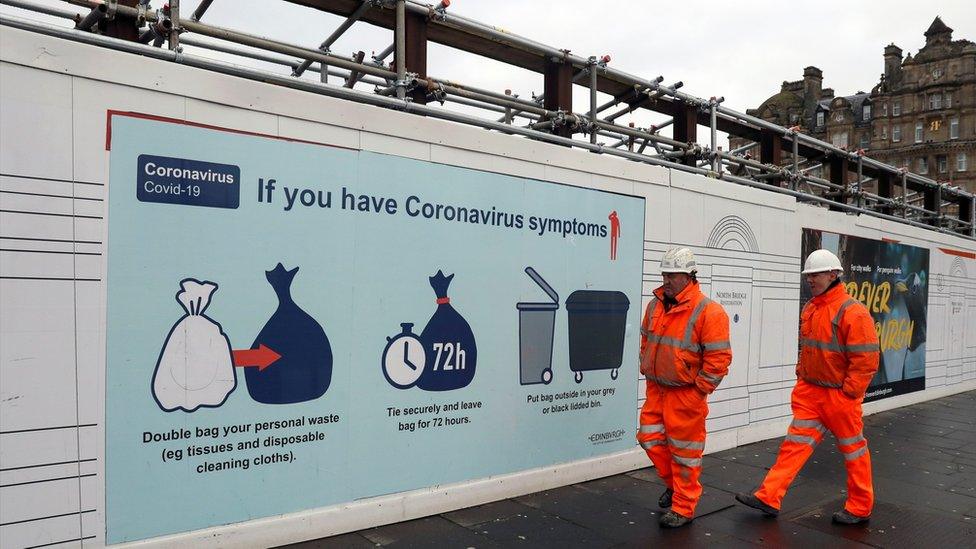Low wind speeds and Covid slow Scotland's economic growth
- Published

Low wind speeds powering wind turbines and Covid absences from school contributed to a slowdown of economic growth in September.
The latest estimated Scottish government figures show output across the economy rose by 0.4% across the month.
That was helped upwards by the dominant services sector, which accounts for around three-quarters of the economy.
It was up 0.5%, while construction also returned to growth.
However, the production sector fell 0.9% - and 3.7% over the July to September quarter, much of that due to lower electricity generation.
Total output in September remained 1.1% percentage points below the peak pre-pandemic output level.
Scottish economic recovery to September was slightly weaker than the UK's, which saw September growth of 0.6%, putting it 0.6 percentage points behind the peak reached in February 2020.

Finance Secretary Kate Forbes and Scottish Secretary Alister Jack welcomed the figures.
Ms Forbes said: "These latest GDP figures underscore Scotland's continuing economic recovery from coronavirus."
She pledged the forthcoming Scottish budget would help households and businesses across the country, and would also see the launch of a strategy to create green, fair and sustainable jobs over the next decade.
The finance secretary added: "Challenges remain, but the indicators show we are in a strong position from which to drive Scotland's economic recovery and renewal."
Mr Jack said: "Economic activity levels in Scotland and the UK more widely are moving in the right direction but there is much more to be done as we recover from the pandemic.
"That's why we are levelling up right across the UK."
'Experimental' figures
He said this will be helped by the announcement of £41bn per year, external for the Scottish government in the autumn budget.
Mr Jack added: "We remain focussed on a sustained recovery."
Estimates for Scottish output, or Gross Domestic Product, during July and August were revised downwards by government statisticians. That means the third quarter of the year saw only modest growth of 0.8%.
That was a sharp fall in growth since the second quarter - April to June, at 5.6% - when businesses and education were reopening as the winter lockdown was eased.
The September figures are so far classified as "experimental", meaning they are the first estimate.
The Scottish figures do not include offshore oil and gas production.